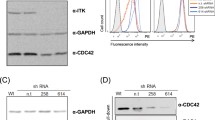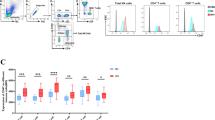Abstract
Background
This investigation deals with the molecular mechanism of anti-human immunodeficiency virus type 1 (HIV-1) action of pentoxifylline (PTX) [1-(5′-oxohexyl)-3,7-dimethylxanthine] a drug widely used for the treatment of conditions involving defective regional microcirculation.
Materials and Methods
The inhibition by PTX of protein kinase C (PKC) or cAMP-dependent protein kinase (PKA)-mediated activation by phorbol ester (PMA) and tumor necrosis factor alpha (TNF-α) of HIV-1-LTR-regulated reporter gene expression was studied in human CD4+ T lymphocytes (Jurkat) and human embryo kidney cells (293-27-2). A protein kinase C is involved in activation of NF-κB in whole cells, identified by using inhibitors specific for PKC- or PKA-catalyzed NF-κB activation in whole cell and cell-free systems.
Results
PTX inhibited PKC- or PKA-catalyzed activation of NF-κB in cytoplasmic extracts from unstimulated Jurkat or 293-27-2 cells, but not interaction of preactivated NF-κB with its motifs. Calphostin C, a specific inhibitor of PKC, inhibited NF-κB activation and HIV-1 LTR-driven reporter gene expression in both PMA- and TNF-α-treated cells. In contrast, although H88 specifically inhibited PKA activity in the cell-free extract, it did not affect NF-κB action in PMA- or TNF-α-treated cells.
Conclusions
The mechanism of inhibitory action of PTX on virus replication and NF-κB-induced trans-activation of HIV-1 gene expression has been elucidated as due to blocking PKC-dependent PMA- or TNF-α-induced activation of NF-κB in Jurkat and 293-27-2 cells. Other protein kinase inhibitors may be useful in down regulating transcription of HIV-1 provirus and thereby virus replication in HIV-infected patients.







Similar content being viewed by others
References
Vaishnav YN, Wong-Staal F. (1991) The biochemistry of AIDS. Ann. Rev. Biochem. 60: 577–630.
Fazely F, Dezube BJ, Allen-Ryan J, Pardee AB, Ruprecht RM. (1991) Pentoxifylline (trental) decreases the replication of the human immunodeficiency virus type 1 in Human blood mononuclear cells and in cultured cells. Blood 77: 1653–1656.
Biswas DK, Dezube BJ, Ahlers CM, Pardee AB. (1993) Pentoxifylline inhibits HIV-1 LTR-driven gene expression by blocking NF-κB action. J. Acq. Immun. Def. Synd. 6: 778–786.
Duh EJ, Maury WJ, Folks TM, Fauci AS, Rabson AB. (1989). Tumor necrosis factor α activates human immunodeficiency virus type 1 through induction of nuclear factor binding to the NF-κB sites in the long terminal repeat. Proc. Natl. Acad. Sci. U.S.A. 86: 5974–5978.
Osborn L, Kunkel S, Nabel GJ. (1989) Tumor necrosis factor α and interleukin-1 stimulate the human immunodeficiency virus enhancer by activation of the nuclear factor NF-κB. Proc. Natl. Acad. Sci. U.S.A. 86: 2336–2340.
Sen R, Baltimore D. (1986) Inducibility of κ immunoglobulin enhancer-binding protein NF-κB by a posttranscriptional mechanism. Cell 47: 921–928.
Baeuerle PA, Baltimore D. (1988) Activation of DNA-binding activity in an apparently cytoplasmic precursor of the NF-κB transcription factor. Cell 53: 211–217.
Baeuerle PA, Baltimore D. (1988a) IκB: A specific inhibitor of the NF-κB transcription factor. Science 242: 540–546.
Shirakawa F, Mizel SB. (1989) In vitro activation and nuclear translocation of NF-κB catalyzed by cyclic AMP-dependent protein kinase and protein kinase C. Mol. Cell. Biol. 9: 2424–2430.
Visvanathan KV, Goodburn S. (1989) Double-stranded RNA activates binding of NF-κB to an inducer element in the human β-interferon promoter. EMBO J. 8: 1129–1138.
Cross SL, Feinberg MB, Wolf JB, Holbrook NJ, Wong-Staal F, Leonard WJ. (1987) Regulation of the human interleukin-2 receptor a chain promoter: Activation of a non-functional promoter by the trans-activator gene. Cell 49: 47–56.
Nabel GJ, and Baltimore D. (1987) An inducible transcription factor activates expression of human immunodeficiency virus in T cells. Nature 326: 711–713.
Nabel GJ, Rice SA, Knipe DM, and Baltimore D. (1988) Alternative mechanisms for activation of human immunodeficiency virus enhancer in T cells. Science 239: 1299–1302.
Chiao PJ, Miyamoto S, Verma IM. (1994) Autoregulation of I kappa B alpha activity. Proc. Natl. Acad. Sci. U.S.A. 91: 28–32.
Grilli M, Chiu JJ-S, Lenardo MJ. (1993). NF-κB and Rel-participants in a multiform transcriptional regulatory system. Int. Rev. Cytol. 143: 1–62.
Ghosh S, Baltimore D. (1990) Activation in vitro of NF-κB by phosphorylation of its Inhibitor IκB. Nature 344: 678–682.
Schutze S, Scheurich P, Schluter C. (1988) Tumor necrosis factor-induced changes of gene expression in U937: Differentiation-dependent plasticity of the responsive state. J. Immunol. 140: 3000–3005.
Jakobovits A, Rosenthal A, Capon DJ. (1990) Trans-activation of HIV-1 LTR-directed gene expression by tat requires protein kinase C. EMBO J. 9: 1165–1170.
Nishizuka Y. (1984) The role of protein kinase C in cell surface signal transduction and tumor promotion. Nature 308: 693–698.
Meichle A, Schütze S, Hensel G, Brunsing D, Krönke M. (1990) Protein kinase C-independent activation of nuclear factor κB by tumor necrosis factor. J. Biol. Chem. 265: 8339–8343.
Hohmann H-P, Remy R, Scheidereit C, van-Loon APG. (1991) Maintenance of NF-κB activity is dependent on protein synthesis and the continuous presence of external stimuli. Mol. Cell. Biol. 11: 259–266.
Shirakawa F, Cedid M, Suttles J, Pollok BA, Mizel SB. (1989) Interleukin 1 and cyclic AMP induce κ immunoglobulin light-chain expression via activation of an NF-κB-like protein. Mol. Cell. Biol. 9: 959–964.
Li S, Sedivy JM. (1993) Raf-1 protein kinase activities the NF-κB transcription factor by dissociating the cytoplasmic NF-κB-IκB complex. Proc. Natl. Acad. Sci. U.S.A. 90: 9247–9251.
Hidaka H, Inagaki M, Kawamoto S, Sasaki Y. (1984) Isoquinolinesulfonamides, novel and potent inhibitors of cyclic nucleotide dependent protein kinase C. Biochemistry 23: 5036–5041.
Krishnamurthi S, Joseph S. (1989) Arachidonate release in neutrophils: Does a lack of effect of protein kinase C inhibitors imply no involvement of protein kinase C? Biochem. J. 261: 687–688.
Sha’afi RI. (1989) Some effects of phorbol esters are not mediated by protein kinase C. Biochem. J. 261: 688–690.
Hidaka H, Hagiwara M. (1987) Pharmacology of the isoquinoline sulfonamide protein kinase C inhibitors. TIPS 8: 162–164.
Kinter AL, Poli G, Maury W, Folks TM, Fauci AS. (1990) Direct and cytokine-mediated activation of protein kinase C induces human immunodeficiency virus expression in chronically infected promonocytic cells. J. Virol. 64: 4306–4312.
Hagiwara M, Inagaki M, Hidaka H. (1987) Specific binding of a novel compound, N-[2-(methylamino) ethyl]-5 isoquinolone sulfoneamide (H8) to the active site of cAMP-dependent protein kinase. Mol. Pharmacol. 31: 523–528.
Kischel T, Harbers M, Stabel S, Borowski P, Muller K, Hilz H. (1989) Tumor promotion and depletion of protein kinase C in epidermal JB6 cells. Biochem. Biophys. Res. Commun. 165: 981–987.
Quick J, Ware JA, Driedger PE. (1992) The structure and biological activities of the widely used protein kinase inhibitor, H7, differ depending on the commercial source. Biochem. Biophys. Res. Commun. 187: 657–663.
Kobayashi E, Nakano H, Morimoto M, Tamaoki T. (1989) Calphostin C (UCN-1028C): A novel micribial compound, is a highly potent and specific inhibitor of protein kinase C. Biochem. Biophys. Res. Commun. 159: 548–553.
Iida T, Kobayashi E, Yoshida M, Sano H. (1989) Calphostins, novel and specific inhibitors of protein kinase C. II. Chemical structures. J. Antibio. 42: 1475–1481.
Bruns RF, Miller FD, Merriman RL, Howbert JJ, Heath WF, Kobayashi E, Takahashi I, Tamaoki T, Nakano H. (1991) Inhibition of protein kinase C by calphostin C is light dependent. Biochem. Biophys. Res. Commun. 176: 288–293.
Qatsha KA, Rudolph C, Marme D, Schachtele C, May WS. (1993) Gö 6976, a selective inhibitor of protein kinase C, is a potent antagonist of human immunodeficiency virus 1 induction from latent/low-level-producing reservoir cells in vitro. Proc. Natl. Acad. Sci. U.S.A. 90: 4674–4678.
Herbert JM, Augereau JM, Maffrand J. (1990) Chelerythrine is apotent and specific inhibitor of of protein kinase C. Biochem. Biophys. Res. Commun. 172: 993–999.
Chijiwa N, Mishima A, Hagiwara M, Sano M, Hayashi K, Inoue T, Hidaka H. (1990) Inhibition of forskolin-induced neurite outgrowth and protein phosphorylation by a newly synthesized selective inhibitor of cyclic-dependent protein kinase (N-[2-(p-bromo cinnamylamino) ethyl]-5-isoquonoline). J. Biol. Chem. 265: 5267–5272.
Roederer M, Staal FJT, Raju PA, Ela SW, Herzenberg LA, Herzenberg LA (1990) Cytokine-stimulated human immunodeficiency virus replication is inhibited by N-acetyl-L-Cysteine. Proc. Natl. Acad. Sci. U.S.A. 87: 4884–4888.
Staal FJT, Roederer M, Herzenberg LA, Herzenberg LA. (1990) Intracellular thiols regulate activation of nuclear factor κB and transcription of human immunodeficienc virus. Proc. Natl. Acad. Sci. U.S.A. 87: 9943–9947.
Dignam JD, Lebovitz RM, Roeder RD. (1983) Accurate transcription initiation by RNA polymerase II in a soluble extract from isolated mammalian nuclei. Nucl. Acids Res. 11: 1475–1489.
Bradford MM. (1976) A rapid sensitive method for the quantitation of microgram quantities of protein utilizing the principle of protein dye binding. Annal. Biochem. 72: 248–254.
Biswas DK, Ahlers CM, Dezube BJ, Pardee AB. (1993a). Cooperative inhibition of NF-κB and Tat-induced superactivation of human immunodeficiency virus type 1 long terminal repeat. Proc. Natl. Acad. Sci. U.S.A. 90: 11044–11048.
Kawamoto S, Hidaka H. (1984) 1-(5-Iso-quinolinesulfonyl)-2-methylpiperazine (H7) is a selective inhibitor of protein kinase C in rabbit platelets. Biochem. Biophys. Res. Commun. 125: 258–264.
Nishikawa M, Uemura Y, Hidaka H, Shirakawa S. (1986) 1-(5-isoquinolinesulfonyl)-2-methylpiperazine (H7), a potent inhibitor of protein kinases, inhibits the differentiation of HL-60 cells induced by phorbol diester. Life Sciences 39: 1101–1107.
Ratner L, Bandress J. (1993). HIV-1 nef suppresses transcription through NF-κB and AP1 in T cells through protein kinase C-dependent mechanism.Natl. Conf. Hum. Retrovir. Dec. 12–16, Abstract 638, pp. 171.
Diaz-Meco MT, Berra E, Municio MM, Sanz L, Lozano J, Dominguez I Diaz-Golpe V, Lainde-Lera MT, Alcami J, m-Paya CV, Arennzana-Seisdedos A, Virelizier J-L, Moscat J. (1993) A dominant negative protein kinase C by ξ subspecies blocks NF-κB activation. Mol. Cell. Biol. 13: 4770–4775.
Sompayrac LM, Dana KJ. (1981) Efficient infection of monkey cells with DNA of Simian Virus. Proc. Natl. Acad. Sci. USA 78: 7575–7578.
Acknowledgments
The authors thank Dr. L. A. Herzenberg of Standard University for providing the 293-27-2 cells. This research was supported by grants from Hoechst-Roussel Pharmaceuticals Inc., Somerville, NJ, U.S.A., and by a Center for AIDS Research Award to the Dana-Farber Cancer Institute. B.J.D. is a Clinical Oncology Career Development awardee of the American Cancer Society.
Author information
Authors and Affiliations
Rights and permissions
About this article
Cite this article
Biswas, D.K., Ahlers, C.M., Dezube, B.J. et al. Pentoxifylline and Other Protein Kinase C Inhibitors Down-Regulate HIV-LTR NF-κB Induced Gene Expression. Mol Med 1, 31–43 (1994). https://doi.org/10.1007/BF03403529
Published:
Issue Date:
DOI: https://doi.org/10.1007/BF03403529




